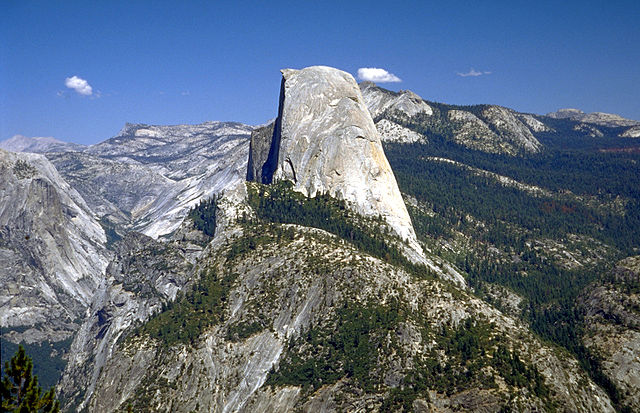Half Dome is a quartz monzonite batholith at the eastern end of Yosemite Valley in Yosemite National Park, California. It is a well-known rock formation in the park, named for its distinct shape. One side is a sheer face while the other three sides are smooth and round, making it appear like a dome cut in half. It stands at nearly 8,800 feet above sea level and is composed of quartz monzonite, an igneous rock that solidified several thousand feet within the Earth. At its core are the remains of a magma chamber that cooled slowly and crystallized beneath the Earth's surface. The solidified magma chamber was then exposed and cut in half by erosion, therefore leading to the geographic name Half Dome.
Sunset over Half Dome from Glacier Point
Profile of Half Dome seen from Washburn Point
Hikers use cables to ascend Half Dome
The Cable Route gets crowded on the weekends
A batholith is a large mass of intrusive igneous rock, larger than 100 km2 (40 sq mi) in area, that forms from cooled magma deep in Earth's crust. Batholiths are almost always made mostly of felsic or intermediate rock types, such as granite, quartz monzonite, or diorite.
Half Dome, a quartz monzonite monolith in Yosemite National Park and part of the Sierra Nevada Batholith
The eroded laccolith above the batholith system of Vitosha - Plana domed mountains, next to Sofia, Bulgaria






